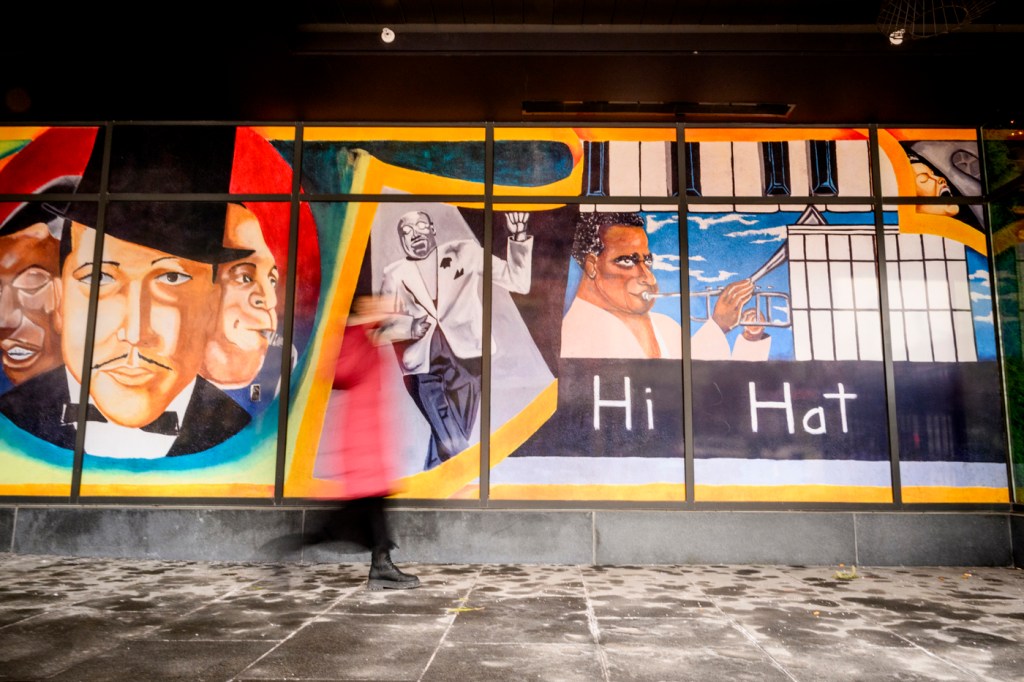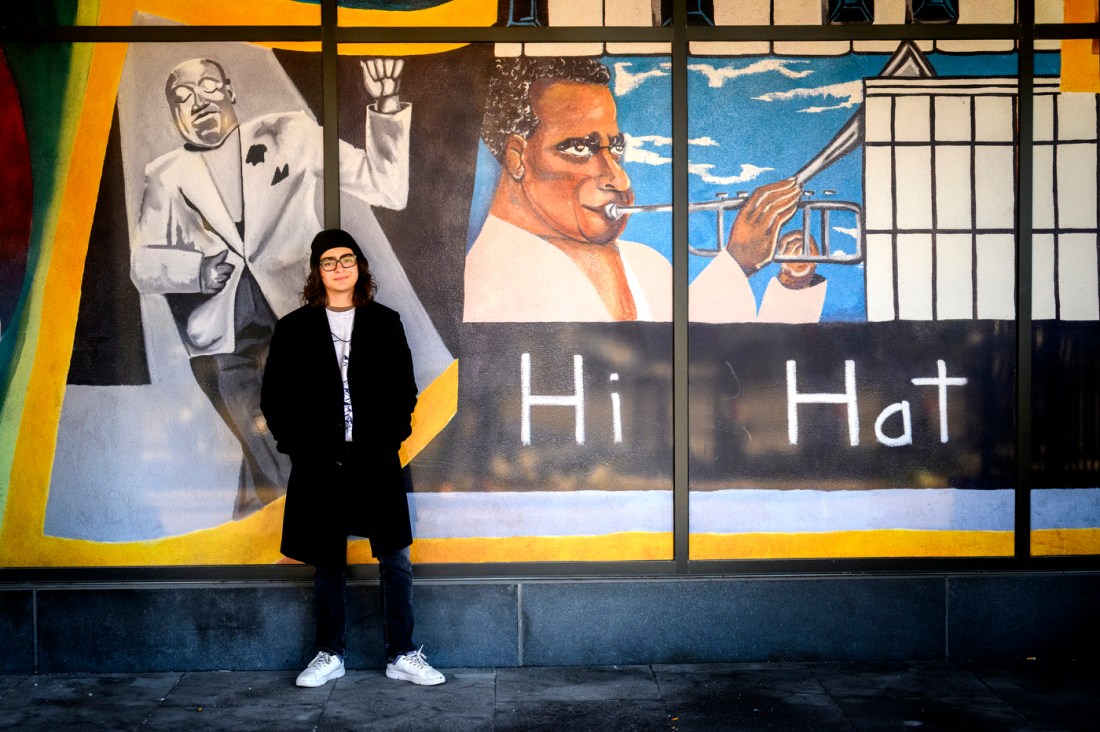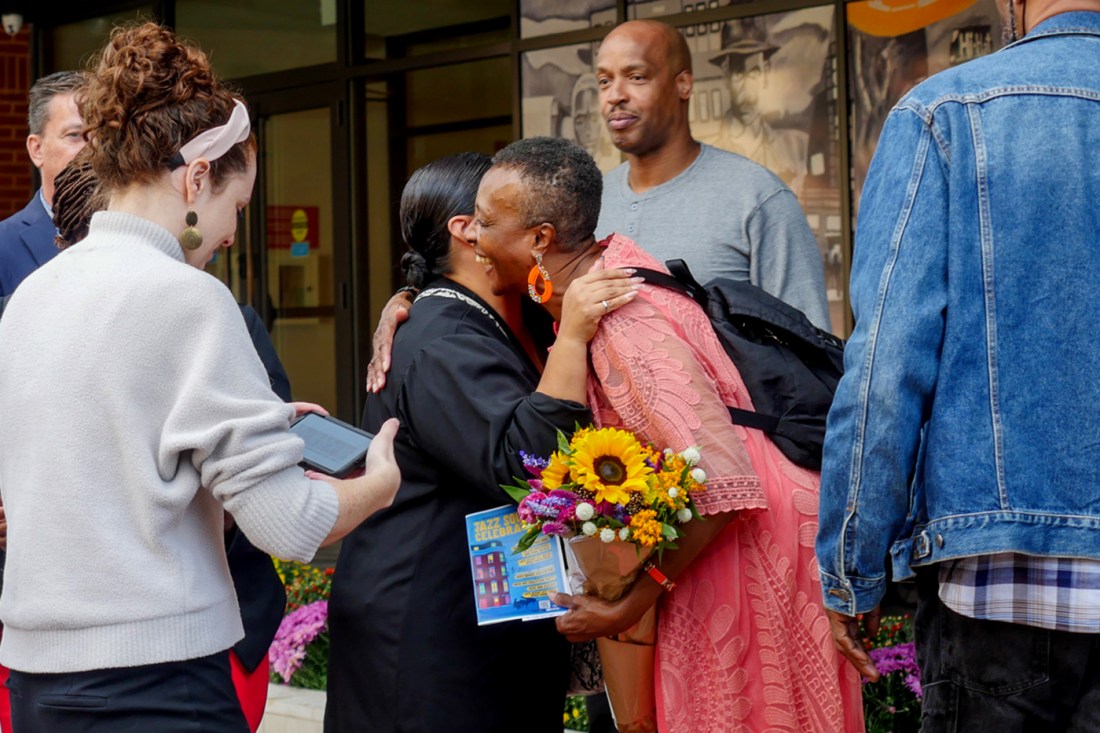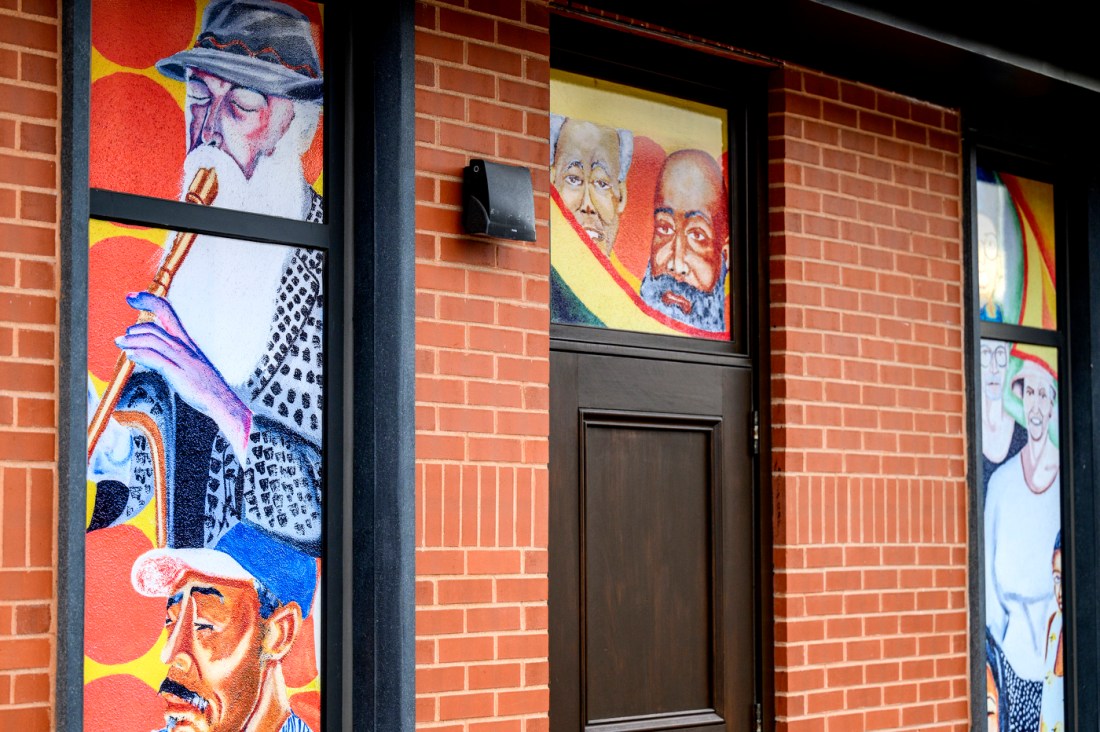How a Northeastern co-op student’s research helped keep Jazz Square’s history alive
Andres Garcia, a third-year computer science student, helped trace the Boston footprints of national icons like Charlie Parker, Dizzy Gillespie and Billie Holiday.

Boston’s South End used to be home to several popular jazz clubs — Savoy Cafe, Hi-Hat Club, Eddie’s Cafe and Wally’s Cafe just to name a few.
Today, only Wally’s remains — a landmark at the intersection of Columbus and Massachusetts Avenues. Founded in 1947 by Joseph L. Walcott, it is now run by his daughter and grandsons.
As a co-op in Northeastern University’s College of Social Sciences and Humanities, Andres Garcia contributed to the effort to document the neighborhood’s rich history.
A third-year computer science student, he worked as a digital asset manager and research assistant under the mentorship of history professors Kris Manjapra and Uta Poiger on partnerships designed to fill gaps in the historical record.

One of his projects focused on the clubs and musicians that made Jazz Square a cultural mecca.
Garcia helped trace the Boston footprints of national icons like Charlie Parker, Dizzy Gillespie and Billie Holiday, as well as uncover the stories of local legends such as Mae Arnette, Fat Man Robinson and Sabby Lewis.
Garcia contributed his findings to the Jazz Square web page on the Boston Jazz Foundation’s website and the Boston Jazz History Walking Tour Guide.
As part of his research, he also compiled a public playlist featuring the music of key Boston jazz artists.
Garcia worked in a team as part of a Mellon Foundation-funded initiative co-led by Northeastern history professors Kabria Baumgartner, Dan Cohen and Poiger called, “Reckonings: A Local History Platform for the Community Archivist.”

In the fall, Garcia’s team contributed to the formal designation of Jazz Square — a two-day celebration organized by the Boston Jazz Foundation, the Claremont Neighborhood Association, Wally’s, Union United Church and Reckonings.
“I loved the sense of community and how it showcased the work Northeastern and, specifically, Reckonings have done in collaborations with other nonprofits,” Garcia says.
Even today, Wally’s attracts music lovers from Boston and beyond who are drawn to the club’s atmosphere and historic significance.
As a musician himself, Garcia was inspired by the music and the atmosphere of the Jazz Square celebration. He also enjoyed meeting people who passionately shared their memories of attending the clubs in their youth.
“It made me feel like my work had much more purpose,” Garcia says. “I gained some of that deep understanding for the humanities through these community interactions.”
During his co-op, Garcia began developing a database of prominent local jazz musicians, which he continues to do working with Reckonings part-time. The database will be designed to accept community contributions of artifacts as well as feed a searchable website, further enriching the historical record.

“In his ongoing work, Andres combines his passion for music, his learning about inequities and gaps in the historical record and his experiences with structuring data,” Poiger says. “We see the database as a prototype useful for many other collaborations between the university and community on history-making.”
Before embarking on his co-op, Garcia didn’t think that computer science and the humanities had much overlap.
Editor’s Picks
“But they do,” he says. “That’s what I’ve really learned. It’s been an amazing experience.”
Garcia enjoyed contributing to the community and helping preserve its history.
“It’s something that I didn’t see myself doing when I first came to Northeastern,” he says.
Also as part of his co-op, Garcia collaborated with Freedom House, a nonprofit focused on civil rights and education serving Boston’s people of color and immigrant youth since 1949, as it prepared for its 75th anniversary.
He helped customize an open-source template that any community partner organization could use to create simple multimedia archives with basic metadata. He then used this template to preserve materials from a summer enrichment program co-led by Freedom House and the Reckonings Project.
This included zines created by youth scholars on the organization’s history and digitized copies of archival sources they discovered in the Northeastern Archives.
Garcia’s experience gave him a deeper understanding of how technology intersects with the humanities, he says.
“Working with these humanities projects brought a new perspective that I highly value,” Garcia says. “It’s something that I would recommend to anyone in any field, especially, computer science.”











